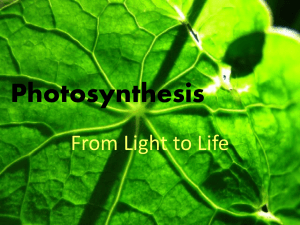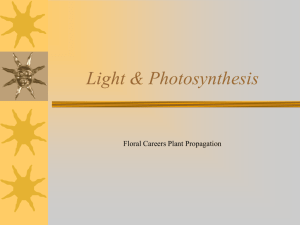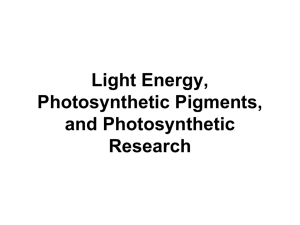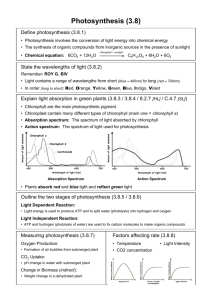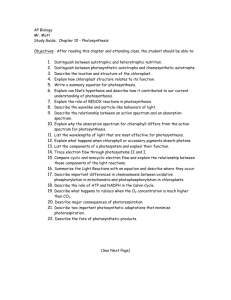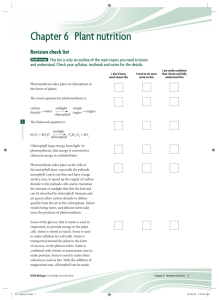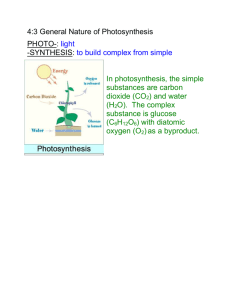Dark Reactions, Splitting Water
advertisement
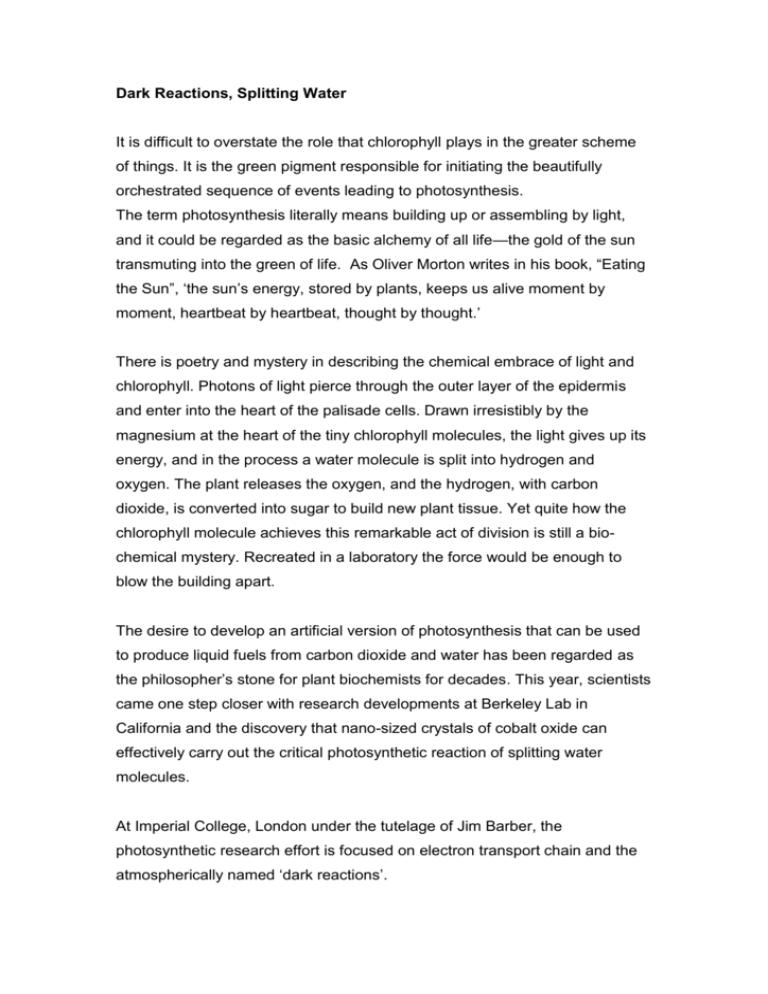
Dark Reactions, Splitting Water It is difficult to overstate the role that chlorophyll plays in the greater scheme of things. It is the green pigment responsible for initiating the beautifully orchestrated sequence of events leading to photosynthesis. The term photosynthesis literally means building up or assembling by light, and it could be regarded as the basic alchemy of all life—the gold of the sun transmuting into the green of life. As Oliver Morton writes in his book, “Eating the Sun”, ‘the sun’s energy, stored by plants, keeps us alive moment by moment, heartbeat by heartbeat, thought by thought.’ There is poetry and mystery in describing the chemical embrace of light and chlorophyll. Photons of light pierce through the outer layer of the epidermis and enter into the heart of the palisade cells. Drawn irresistibly by the magnesium at the heart of the tiny chlorophyll molecules, the light gives up its energy, and in the process a water molecule is split into hydrogen and oxygen. The plant releases the oxygen, and the hydrogen, with carbon dioxide, is converted into sugar to build new plant tissue. Yet quite how the chlorophyll molecule achieves this remarkable act of division is still a biochemical mystery. Recreated in a laboratory the force would be enough to blow the building apart. The desire to develop an artificial version of photosynthesis that can be used to produce liquid fuels from carbon dioxide and water has been regarded as the philosopher’s stone for plant biochemists for decades. This year, scientists came one step closer with research developments at Berkeley Lab in California and the discovery that nano-sized crystals of cobalt oxide can effectively carry out the critical photosynthetic reaction of splitting water molecules. At Imperial College, London under the tutelage of Jim Barber, the photosynthetic research effort is focused on electron transport chain and the atmospherically named ‘dark reactions’. In both cases, the impulse is to understand the molecular reactions involved in water splitting and to use such knowledge to devise possible renewable energy sources for the future that would move society and industry away from the dark inheritance of fossil fuel and a warming planet, towards a future where scientists can perform the miracle of splitting water. Ackroyd & Harvey September 2009

